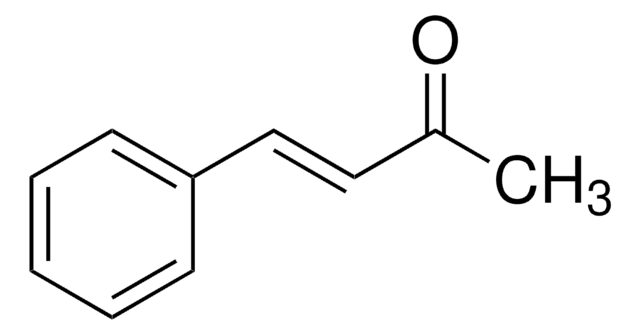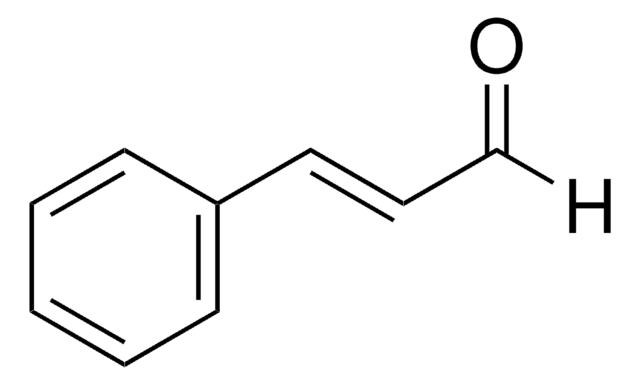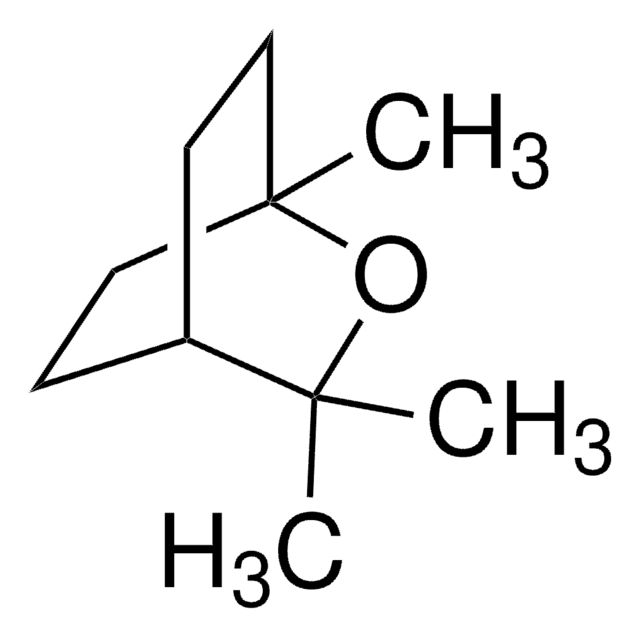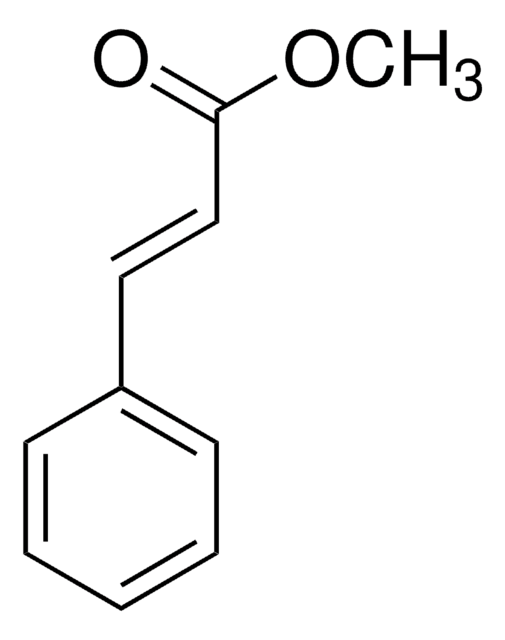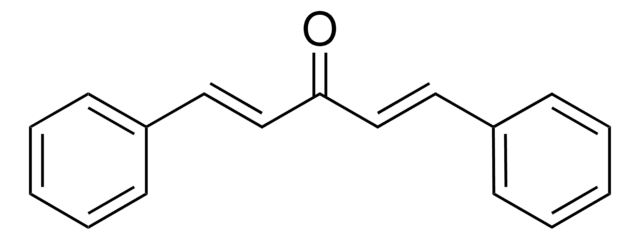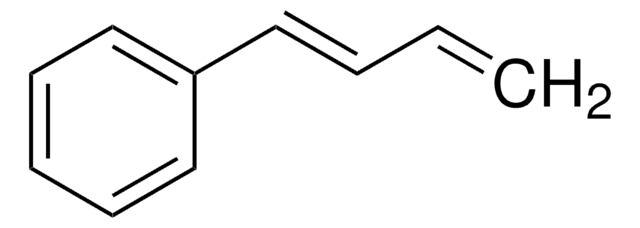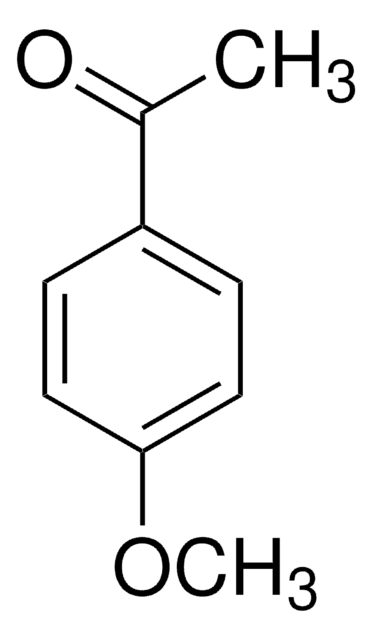W288101
Benzylideneacetone
≥98%, FG
Sinônimo(s):
Benzalacetone, 4-Phenylbut-3-en-2-one, Benzylideneacetone, Methyl styryl ketone
About This Item
Produtos recomendados
fonte biológica
synthetic
Nível de qualidade
grau
FG
Halal
Kosher
Agency
meets purity specifications of JECFA
conformidade reg.
EU Regulation 1334/2008 & 872/2012
FDA 21 CFR 172.515
pressão de vapor
0.01 mmHg ( 25 °C)
Ensaio
≥98%
p.e.
260-262 °C (lit.)
pf
39-42 °C (lit.)
aplicação(ões)
flavors and fragrances
Documentação
see Safety & Documentation for available documents
alérgeno alimentar
no known allergens
Organoléptico
anise; cinnamon; jam; balsamic; spicy; floral; sweet
cadeia de caracteres SMILES
[H]\C(=C(\[H])c1ccccc1)C(C)=O
InChI
1S/C10H10O/c1-9(11)7-8-10-5-3-2-4-6-10/h2-8H,1H3/b8-7+
chave InChI
BWHOZHOGCMHOBV-BQYQJAHWSA-N
Procurando produtos similares? Visita Guia de comparação de produtos
Categorias relacionadas
Descrição geral
Ações bioquímicas/fisiológicas
Outras notas
Palavra indicadora
Warning
Frases de perigo
Declarações de precaução
Classificações de perigo
Skin Irrit. 2 - Skin Sens. 1
Código de classe de armazenamento
11 - Combustible Solids
Classe de risco de água (WGK)
WGK 2
Ponto de fulgor (°F)
253.4 °F - closed cup
Ponto de fulgor (°C)
123 °C - closed cup
Equipamento de proteção individual
dust mask type N95 (US), Eyeshields, Faceshields, Gloves
Escolha uma das versões mais recentes:
Já possui este produto?
Encontre a documentação dos produtos que você adquiriu recentemente na biblioteca de documentos.
Os clientes também visualizaram
Global Trade Item Number
| SKU | GTIN |
|---|---|
| W288101-1KG-K | 4061834405047 |
| W288101-25KG | |
| W288101-SAMPLE | |
| W288101-10KG | |
| W288101-10KG-K | 4061834405030 |
| W288101-1KG | |
| W288101-25KG-K | 4061834405054 |
| W288101-SAMPLE-K | 4061834355809 |
Nossa equipe de cientistas tem experiência em todas as áreas de pesquisa, incluindo Life Sciences, ciência de materiais, síntese química, cromatografia, química analítica e muitas outras.
Entre em contato com a assistência técnica